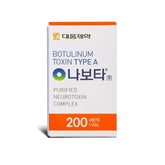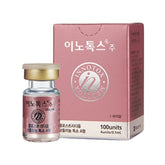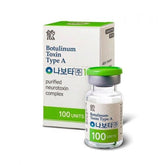Botox for Migraines: Understanding the Treatment

Botox for Migraines: Understanding the Treatment. Migraines are more than just severe headaches; they are a debilitating neurological condition that affects millions of people worldwide. While many treatments are available, Botox has emerged as a promising option for those who suffer from chronic migraines. This blog post will delve into how Botox for migraines works, its benefits, the treatment process, and what patients can expect.
What is Botox?
Botox, or Botulinum toxin, is a neurotoxic protein produced by the bacterium Clostridium botulinum. While it's widely known for its cosmetic uses, such as reducing wrinkles, Botox has various medical applications. One of its FDA-approved uses is for the treatment of chronic migraines, defined as having 15 or more headache days per month.
How Does Botox Treat Migraines?
Botox treats migraines by blocking the release of certain chemicals involved in pain transmission. When injected into specific areas around the head and neck, Botox acts as a muscle relaxant. It inhibits the activation of pain networks in the brain, thereby reducing the frequency and severity of migraine attacks.
The treatment involves injecting small amounts of Botox into multiple sites around the head and neck. These injections target the area’s most commonly associated with migraine pain, such as the forehead, temples, and the back of the head.
Benefits of Botox for Migraines
Botox offers several benefits for individuals suffering from chronic migraines:
- Reduced Frequency of Migraines: Clinical trials have shown that Botox can significantly reduce the number of migraine days per month.
- Decreased Severity of Attacks: Many patients report less severe migraine attacks after receiving Botox treatments.
- Improved Quality of Life: By reducing the frequency and severity of migraines, Botox can improve overall quality of life, allowing patients to engage more fully in daily activities.
- Preventative Treatment: Unlike acute migraine treatments that are taken during an attack, Botox is a preventative measure, aiming to reduce the occurrence of migraines.
The Treatment Process
Understanding the treatment process can help alleviate any concerns and prepare patients for what to expect.
Consultation
The first step in the treatment process is a thorough consultation with a healthcare provider who specializes in Botox for migraines. During this consultation, the provider will review the patient's medical history, migraine patterns, and previous treatments to determine if Botox is a suitable option.
Treatment Session
A typical Botox treatment session for migraines involves multiple injections. Here’s what patients can expect:
- Preparation: The treatment area is cleaned, and a topical anesthetic may be applied to minimize discomfort.
- Injection Sites: Botox is injected into specific sites on the forehead, temples, back of the head, neck, and sometimes the shoulders. The exact number of injections can vary but usually involves 31 injections across 7 key muscle areas.
- Procedure Duration: The entire procedure generally takes about 15-30 minutes.
Post-Treatment
After the treatment, patients can typically resume normal activities immediately. Some may experience mild side effects such as slight bruising or swelling at the injection sites, but these are usually temporary.
What to Expect After Treatment
Results from Botox treatment for migraines are not immediate. Patients may start noticing improvements within 2 to 4 weeks, with full effects often taking up to 6 months. The initial course typically involves two treatments 12 weeks apart. Continued treatment is usually needed every 12 weeks to maintain the benefits.
Potential Side Effects
Like any medical treatment, Botox for migraines can have side effects. While most are mild and temporary, it’s important to be aware of them:
- Injection Site Reactions: Common side effects include pain, redness, and swelling at the injection sites.
- Neck Pain: Some patients report neck pain or stiffness following the injections.
- Muscle Weakness: In rare cases, Botox can cause muscle weakness in areas adjacent to the injection sites.
- Headache: Paradoxically, some patients may experience a headache following treatment, though this is typically mild and short-lived.
Who Should Consider Botox for Migraines?
Botox is specifically approved for individuals with chronic migraines, defined as experiencing 15 or more headache days per month, with at least 8 of those being migraines. It is typically recommended for patients who have not responded well to other preventative treatments.
How to Find a Qualified Provider
Finding a qualified healthcare provider is crucial for the safe and effective administration of Botox for migraines. Here are some tips:
- Specialization: Look for a provider who specializes in headache or migraine treatment.
- Experience: Choose a provider with extensive experience in administering Botox for migraines.
- Credentials: Ensure the provider is board-certified and has received specialized training in Botox treatments.
Insurance Coverage
Botox for migraines is an FDA-approved treatment, and many insurance plans cover it. However, coverage can vary, so it’s important to check with your insurance provider to understand your benefits and any potential out-of-pocket costs.
Patient Experiences
Hearing from others who have undergone Botox treatment for migraines can provide valuable insights and reassurance. Many patients report significant reductions in migraine frequency and severity, along with an improved quality of life. It’s important to remember that individual experiences can vary, and what works for one person may not work for another.
Botox for migraines offers a promising treatment option for those suffering from chronic migraines. By reducing the frequency and severity of migraine attacks, Botox can significantly improve the quality of life for many patients. Understanding the treatment process, potential benefits, and side effects can help individuals make informed decisions about their migraine management.
If you suffer from chronic migraines and traditional treatments have not provided relief, consider discussing Botox with your healthcare provider. With its preventative approach and proven efficacy, Botox for migraines could be the solution you’ve been seeking to regain control over your life and reduce the burden of migraine pain.





